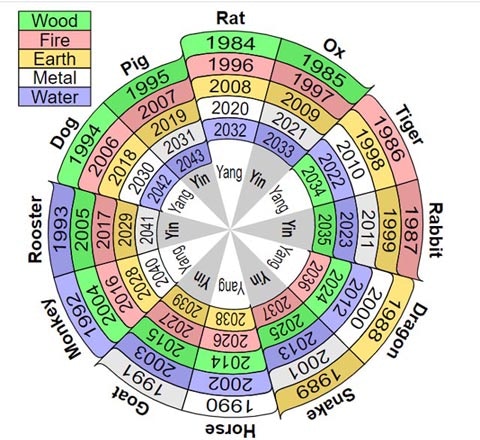Gong Hei Fat Choy! Xin Nian Kuai Le! In other words, Happy Chinese New Year!
You know, one of the many weird things I experienced when I was a "foreigner"--that is, a non-Chinese person living in China--was that the New Year's holiday seemed to last for weeks!
We started greeting each other with "Happy New Year!" a few days after Christmas, and went on doing so well into January. Then pretty soon, it was time to start greeting people for the next new year--the Chinese one--which could happen anywhere from mid-January to mid-February.
What's up with that?
Let's talk about this ginormous festival, including when it happens, and for how long, and where the <BLEEP> is everyone going?
--------
How is the Date Determined?
First, let's deal with some calendrics.
You'll often hear the traditional Chinese calendar called a "lunar calendar." That ain't strictly true. In a true lunar calendar, the New Year's date drifts all over the place. For example, in the Sunni Islamic calendar, New Year's Day was September 1st last year; August 20 this year; and will probably be August 10 in 2021. That is, it's eleven or twelve days earlier every year. In 1960, it was in June, and in 1940, in February!
But the Chinese calendar (like the Hebrew calendar, some Indian calendars, and many others) is what we call a "lunisolar calendar." This ties an essentially lunar calendar to solar cycles (years).
Chinese New Year--or as the Chinese themselves call it, "Spring Festival"--always happens between about two weeks before and two weeks after the start of February--basically, Groundhog's Day. (And that date, by the way, is the start of Spring, as the first of November--Halloween--is the start of winter.)
I used to ask my Chinese students, "How is the date of Spring Festival determined?" and most said brightly, "Look at the calendar!" But when asked how the calendar maker knew the date, they were usually stumped. (Quick: How is the date of Easter determined? See?)
So here's the answer: The New Year begins on the second new moon after the winter solstice. So it could be just over a month, or nearly two full months, after approximately December 21.
Now, in China, this is by far the biggest holiday of the year, MUCH bigger than Christmas is in the West. In fact, so many people go home for the holiday that it has been called "the largest annual human migration in the world"--over the 40 days surrounding the actual New Year's date (about three weeks before and after), almost THREE BILLION passenger journeys are made!
Other Holidays at the New Year
Aside from the New Year, a number of other, more temple-y, events are celebrated. (Special days tend to constellate around the start of the year, which is what scholar Mircea Eliade called an example of "the myth of the eternal return.") All of these dates fall in the first month of the lunar--oops, lunisolar--calendar:
New Year's Day also marks the birth of Maitreya Bodhisattva, the "Laughing Buddha"; the sixth day is the birth of Dipankara, the "Lamplighter Buddha," who preceded the historical Buddha by eons; the eighth is Yan Luo Wang or Yama, King of Hell; the ninth celebrates both the Jade Emperor, folk and Daoist king of heaven; and Shakra Devaraja, the Buddhist form of the Indian god Indra.
The fifteenth is a very special day, because it's the full moon that marks the end of the two-week Spring Festival. It's also the birthday of Zhang Daoling, a celestial Daoist master; Lady Linsui, a goddess of midwifery; and Pangu, held in folk traditions to be the creator of the world (which is composed of his body). It's popularly celebrated as the Lantern Festival.
By the way, Gong Hei Fat Choy is NOT "Happy New Year" in Chinese. It IS a New Year's greeting, though, something like wishing you happiness and prosperity. "Happy New Year" is Xin Nian Kuai Le! But both greetings are commonly used (the former pronounced in Mandarin gong xi fa cai, phonetically "gong shee fah tsai").
 |
| Lunisolar--get it? |



Please leave a comment - I can't WAIT to hear from you!